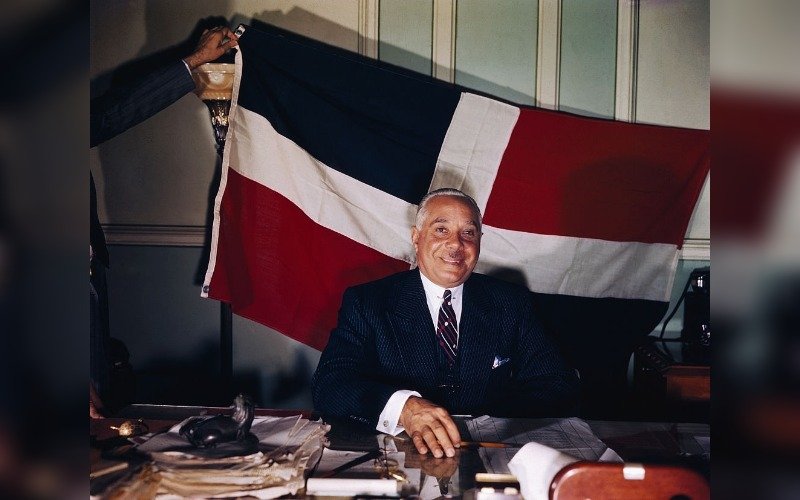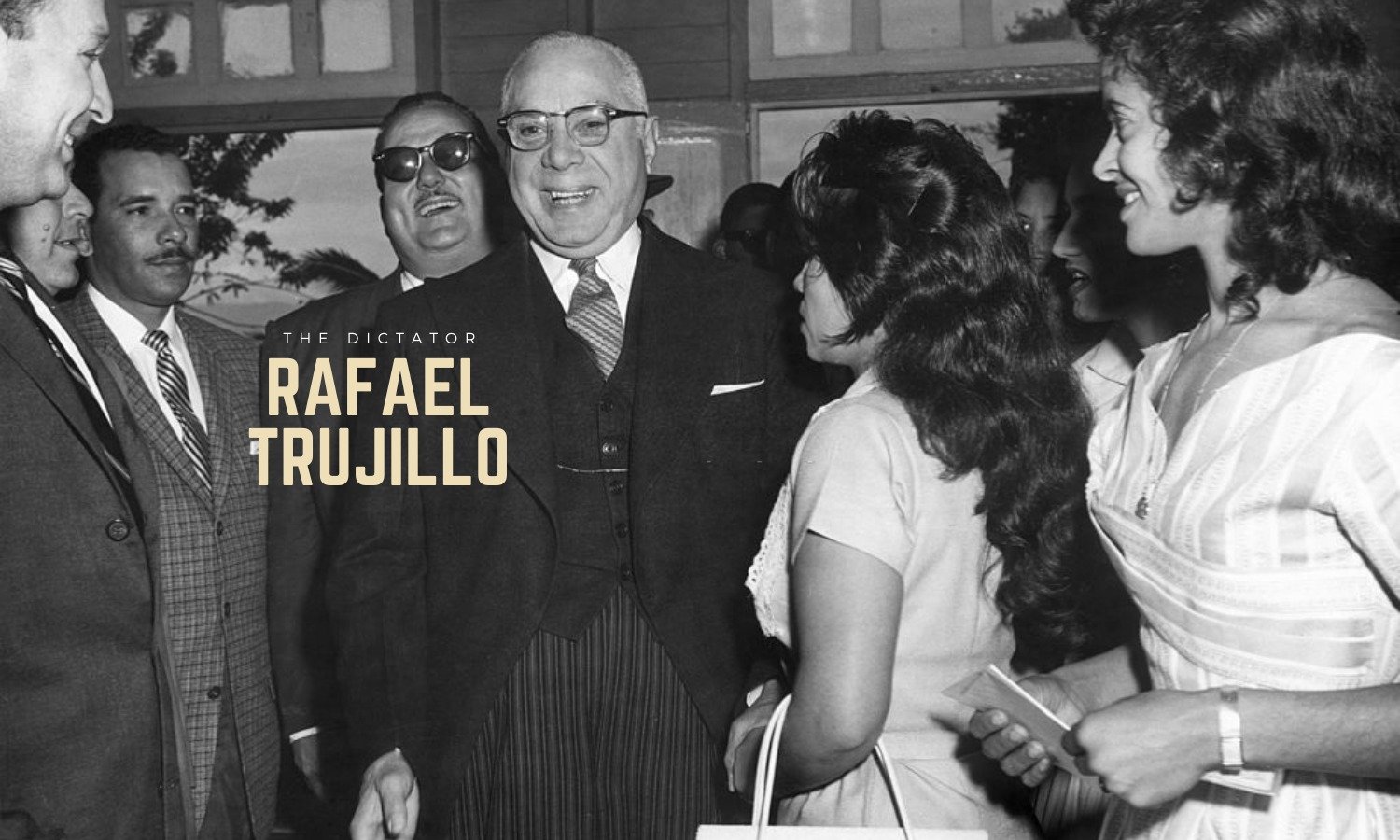Rafel Trujillo was a dictator who ruled in the Dominican Republic for over 30 years. Although he successfully reduced the national debt, he had a bad record of human rights abuses. He tortured and killed thousands of civilians and got away with it for decades. Rafael Trujillo’s leadership is deemed to be one of the most brutal periods in his country’s history.
In 1937, reports of a massacre against about 20,000 Haitians came to public light. Finally, his cup became full when he made an assassination attempt on Venezuelan President Romulo Betancourt in 1960. The Organization of American States (OAS) voted to cut ties with him.
Rafael Trujillo: Early years
On October 24, 1891, a little boy was born into a middle-class family in the Dominican republic. He was born the third of 11 children. At age 6, the boy was registered in the school of Juan Merino. A year later, he transferred to Broughton. That boy was Rafael Trujillo.
At age 16, Rafael Trujillo worked as a telegraph operator. He held the job for three years. Shortly afterward, he turned to crime. Different types of crime. Counterfeiting cheques, postal robbery, stealing cattle, and so on. He was arrested and imprisoned. But this did not deter him. He later formed a notorious gang of robbers known as the 42.
During the US occupation of the Dominican Republic from 1916 to 1924, he joined the Constabulary Guard. The US Marines trained him, and he rose the ranks quickly in the military. By 1927, he was named commander in chief of the National Army.
Absolute Power
In 1930, a group of rebels planned to overthrow Dominican president Rafael Vasquez to extend his tenure and disregard the constitution. Rafael Trujillo had planned with the leader of the rebels. However, to maintain his neutrality, he held his troops back. With Vazquez in exile, Trujillo seized the opportunity and eliminated his political rivals through intimidation or force.
That same year, he won a rigged presidential election, ushering in “the era of Trujillo.”
There was a hurricane months after Rafael Trujillo took over the presidency. The storm virtually destroyed the capital city, Santo Domingo. 2,000 people died in the hurricane. Trujillo responded to this mishap by placing the country under martial law. Then he began to clean the debris and rebuild the city. Six years afterward, he renamed the city in his honor, together with thousands of other streets and landmarks throughout the country.
During his leadership, Trujillo was credited for improving sanitation, improving education and healthcare, and improving people’s living standards.
Parsley Massacre
Even though Rafael Trujillo ceded the presidency to his brother in 1952 and 1957, Trujillo Maintained control of the Dominican Republic for 31 years. He established a secret police force that included a widespread network of spies. These were used to censor the press and torture dissenters or kill them in arranged accidents. Before a border was established with Haiti in 1936, there were border conflicts that had persisted for centuries. In October 1937, Trujillo ordered the killing of 20,000 Haitians. This incident was known as the Parsley Massacre. For his atrocities, he paid a sum of $525,000 to the Haitian government.
End of Trujillo Era
After discovering that the Venezuelan government of President Betancourt was plotting to undermine his regime, Trujillo planned to assassinate Betancourt with a car bomb in 1960. The bomb went off, killing two people; however, the target survived with injuries.
News of the failed assassination attempt got to world leaders, and they felt it was time to take action against Trujillo. In response, the Organisation of African States broke diplomatic ties and imposed sanctions on the Dominican Republic.
The underground resistance movement started to form in opposition to Trujillo in the 1940s.
Cuba
In 1947, exiles from the Dominican Republic settled in Cuba. Ramon Grau trained a force that would overthrow Rafael Trujillo. The Cuban government supported this action. Nevertheless, the group could not execute the expedition due to international pressure. In turn, when Fulgencio Batista was in power, Trujillo Assisted anti-Batista forces in 1955. The weapons Trujillo sent got into Fidel Castro’s insurgents’ hands when he made Alliance with Carlos Prio.
Immediately Trujillo noticed that Fidel Castro was winning, he switched his Alliance to support Batista. He sent him money, equipment, and soldiers. However, Trujillo was shocked when Batista suddenly appeared in the Dominican Republic as a fugitive after Fidel Castro had overthrown him.
Threats from Fidel Castro
Fidel Castro threatened to overthrow Trujillo. To avoid this, Trujillo responded by beefing up his country’s security. He increased the budget for national defense. A Foreign Legion defended Haiti, as many expected Castro to first invade Haiti before moving to the Dominican Republic.
In 1959, a group of Invaders headed for the Dominican coast. They were on board two yachts escorted by Cuban gunboats. Dominican soldiers spotted them and blasted the ships to pieces. Trujillo ordered his son to find out the invaders, and soon he captured them. The invaders were then taken aboard an air force plane and pushed out in mid-air. They fell to their deaths.
Personal life
At the center of Trujillo’s core was his Instinct for power. Besides, he had an intense desire for money. He recognized money as a source of energy. As part of his daily routine, he rose at 4 a.m. and went for exercise. Then he sat with the papers and completed reading the papers before breakfast. He got to the office by 9, where he completed his work.
Until the National Palace was built in 1947, he worked from the Casas Reales. This was the center of administration during the colonial era. Today, the Casas Reales is a museum. His desk, chair, and a collection of the armor that he bought.
Trujillo was punctual, methodical, and secretive. He had no real friends, only allies and acquaintances. He was unpredictable towards his associates.
Trujillo and his family were very wealthy. He bought cattle large-scale. He ventured into meat and dairy production. His family also dominated the sugar, tobacco, and lottery business. He appointed family members into positions within the government and the army. One of Trujillo’s sons was made a colonel in the army when he was just four years old.
By 1937, his annual income had risen to about $1.5 million. He had an extensive collection of elaborate uniforms and suits. He loved fine clothing and was fond of neckties.
Trujillo was married three times and also kept many mistresses. He married Aminta Lachapelle in August 1913. In 1927, he married Bienvenida Martinez and divorced her in 1935.
Despite his indifference to baseball, he invited many black American players to the Dominican Republic. These players played on teams and got paid handsomely. The great league star Satchel Paige pitched for a team he organized. The team won the Dominican championship in 1937.
Trujillo was fit and very energetic. He was generally healthy. However, later in life, he suffered from prostate problems. In 1934, he flew in a specialist doctor from Paris to operate on him for urologic problems.
Death
On 30th May 1961, Trujillo was killed when his Chevrolet was ambushed on the road outside the Dominican capital. Several conspirators plotted the ambush, including General Juan Tomas Diaz and General Imbert Barrera.
The plotters could not control the country’s leadership because one of them failed to play his part, and they had not made alternative plans. Ramfis Trujillo, son of Trujillo, hunted the perpetrators. Hundreds of suspects were detained, and many were tortured. Trujillo returned from Paris to fill his father’s shoes.
The men who killed Trujillo
It was late evening when Trujillo was assassinated in a gun battle. He was driving from the capital to San Cristobal, where he kept a young mistress. In their vehicle, General Imbert and three others Waited for Trujillo’s vehicle to drive past. General Imbert drove while the other gunmen stayed further away. They chased Trujillo’s car as it sped past. Trujillo’s driver slowed down, and General Imbert double-crossed him. Then there was a gun battle. Trujillo and his driver were armed, and they fought back. His assailants came out of the car and got closer to him. At the end of the gun battle, Trujillo was lying lifeless on the highway.
Over the period of his leadership, Trujillo collected medals and titles. He enlarged his business and property. He renamed the country’s highest peak mountain Pico Trujillo. He maintained a cordial relationship with the U.S. Nevertheless, the relationship turned sour due to his human rights atrocities.
President Eisenhower had approved a plan to dethrone Trujillo if a suitable successor could be found and positioned to take over. At the last minute, the Kennedy administration withdrew support for the attempt on Trujilo’s life.
Within days after the assassination, Trujillo’s son rounded up almost everyone involved in the murder of his father. Two of General Imbert’s fellow conspirators were shot while resisting arrest. The other four were put in prison. Dominicans do not like to refer to the killing of Trujillo as an assassination. They describe it as “ajusticiamiento,” a Spanish word that means justice has been served.
MORE:
Former President Jacob Zuma Warned to Show up in Court
World Court to Enact on Iran and United States Case



















